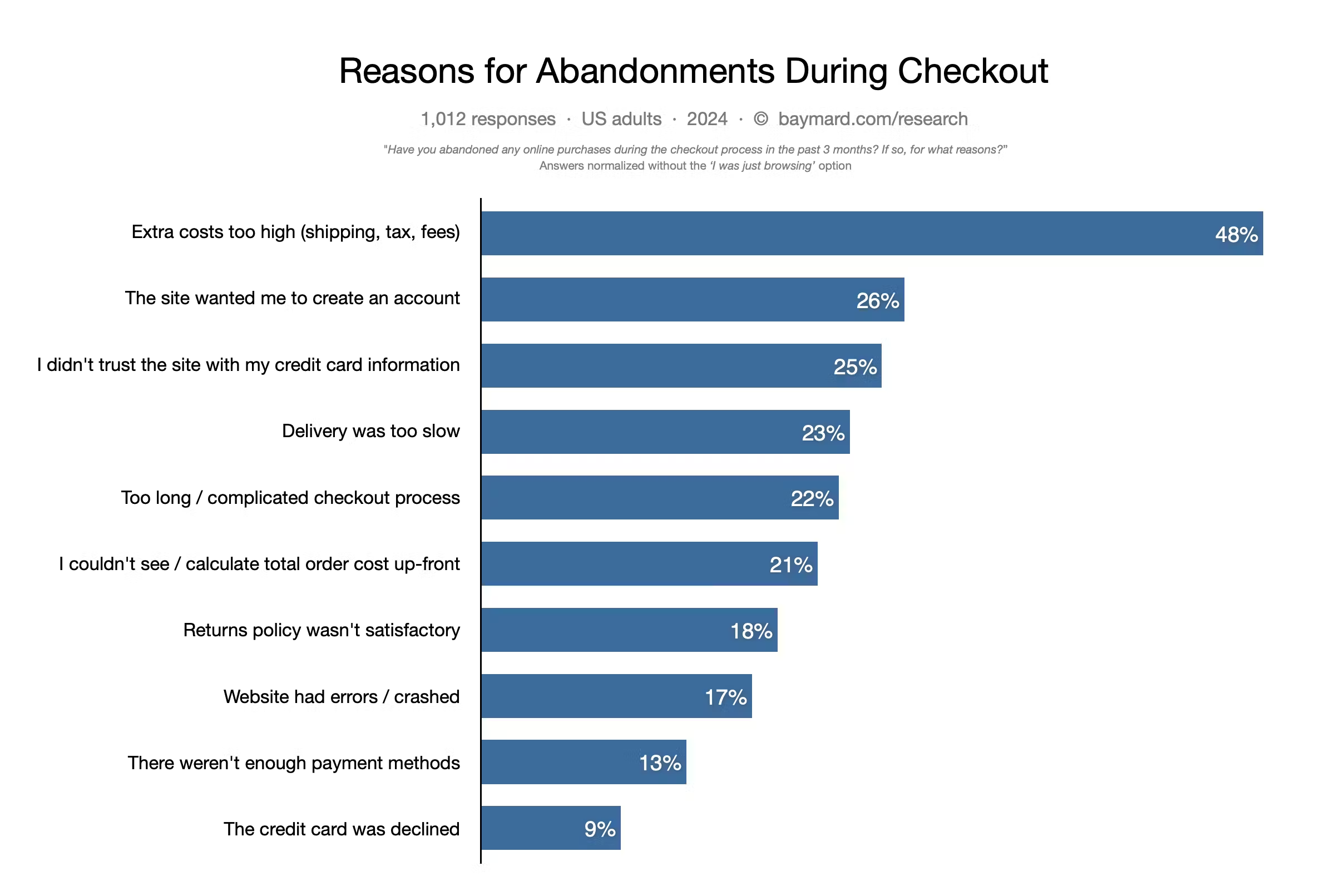Why Prioritizing UX is Crucial for Your eCommerce Success
A common misconception regarding user experience (UX) is that it simply refers to “How easy it is to use a platform.” But this definition only covers a small portion of the vast reality of UX. It would be more correct to characterize UX as an experience, as that is what it sounds like. Furthermore, as an experience, it covered every aspect of a platform and the way a user uses it. A website with excellent user experience is refined, well-thought-out, extremely gratifying for its visitors, and, in the case of e-commerce sites, as profitable as feasible.
Creating an eCommerce website has never been so simple. All you have to do is select a powerful online store builder and concentrate on including the products you wish to sell to your customers. However, as soon as customers begin to visit your eCommerce website, you discover that things aren’t going according to plan.
The crucial statistic that practically all website owners are concerned about is shopping abandonment. When a visitor adds items to their basket and tries to check out but gives up on a certain step in the process, this is known as abandonment. The average cart abandonment rate, as determined by the Baymard Institute, is 70.19%. This figure represents an average that was determined using data from 49 distinct studies that included statistics on e-commerce shopping cart abandonment. What causes visitors to abandon websites before making a purchase? Bad user experiences are often the cause of that.

Common Reasons for eCommerce Shopping Abandonment
Poor user experience is the reason visitors abandon your website and the cause of financial loss for your company. This post will examine typical causes of shopping abandonment and possible solutions for designers.
The slow loading speed of the website
Site desertion can be readily caused by slow loading times. Furthermore, we refer to loading time in terms of seconds. It goes without saying that we shouldn’t make people wait 10 seconds for anything on our websites as doing so will irritate users.
How to fix this issue, Take the effort to improve the functionality of your website;
- To identify the reasons behind slow speeds, employ tools such as PageSpeed Insights or similar solutions
- Examine the Front-End performance checklist and take note of its helpful suggestions.
Make an Account Creation Request
Before enabling customers to make purchases, several websites need them to register for an account. According to data from the Baymard Institute, the second most common reason why users give up on their carts is the request to form an account.
One of the main causes of users leaving eCommerce websites is the absence of guest checkout. The work needed to register (enter email address or phone number, choose a password that complies with security guidelines, and then confirm an email address or phone number) may not be commensurate with the advantages that users will experience (particularly if it’s a one-time transaction). Also, not everybody is content to divulge their personal information.
How to fix this issue;
- Allow guests to check out. Allow users to check out as guests or create a new account at their discretion. Visitors are more likely to make additional purchases from you if they choose to use guest checkout and have a positive experience.
- Make the option to check out as a guest stand out. Don’t bury guest checkout in tiny, scarcely perceptible text links.
Too much data entry is needed.
Nobody enjoys filling out forms, and the more data you request from people, the less likely it is that they will comply. Additionally, if you request a lot of information that doesn’t seem related to the work, many consumers will question why they are needed.
How to fix this issue;
- Only inquire about necessities. Limit the amount of fields that users must complete to the absolute minimum. Recall that you may always follow up to get further details (e.g., after the user placed an order).
- Some fields can have smart defaults to reduce the amount of typing required from the user. For instance, you can use the visitor’s geolocation data to pre-fill the delivery address.
Unexpected fees
Individuals are extremely cautious when it comes to money. Users are therefore less inclined to commit to the purchase when they are not informed about the total amount they will be spending on the checkout page. One of the main causes of visitors abandoning the purchase process is hidden shipping expenses. For this reason, you should never conceal additional fees.
How to fix this issue, On the product page, display the item’s price including taxes and the shipping costs.
Not enlightening delivery choices
During checkout, customers frequently ask, “When will I receive my order?” eCommerce websites all too frequently use ambiguous delivery descriptions, like “Standard (Regular)” or “Express (Fast).” This description’s flaw is that it fails to address the user’s query.
How to fix this issue, Specify the anticipated delivery date since this information aids in the decision-making process for users. Give a specific delivery date if possible, but if you are unable to do so, at the very least state that “Average delivery time is 5 business days.”
Multichannel encounter
Many website designers neglect to consider other aspects of the user journey in favor of concentrating only on the local experience. All facets of interacting with a product or service are included in user experience (UX), and it is crucial to offer a positive user experience at every stage of the user journey. Consider an eCommerce software that offers a seamless user experience for product purchases, but when buyers need to return an item, they get appalling customer care (i.e., lengthy wait times or a lot of paperwork). Even with an excellent product purchase flow, this part of the journey might negatively impact the user’s entire experience with the product.
How to fix this issue, Make an investment in fostering user relationships.
The significance of UX
Numerous advantages exist for your business and your consumers when you invest in the user experience of your e-commerce website. A well-optimized user experience (UX) for your store makes you stand out from the competition and boosts efficiency, conversion, and return on investment (ROI). To find out how, let’s take a closer look at each of these advantages.
Distinguishes your company
Online competition is fierce, as everyone knows, and it will only grow worse with the daily influx of new e-commerce websites. Because they have so many options, today’s online shoppers are inclined to shop around before deciding where to spend their money. This implies that in order to attract customers, you’ll need to do more than just have excellent products or great design—you’ll also need to provide an unmatched online buying experience.When your company is focused on giving your clients a unique shopping experience, your whole business strategy will have that comprehensive, long-term view that will set it apart from the competition.
Boosts customer satisfaction & loyalty
With so many shutdowns due to pandemics, online shopping is growing in popularity as a way to decompress. Your customer will buy from you with a smile rather than annoyance if you can satisfy their needs in a way that is entertaining and engaging.
Your e-commerce website offers all the benefits of the internet by default, including speed, efficiency, and convenience—all of which are characteristics that customers want in their buying experiences. Good UX is therefore essential. By making your website easy to use, you can lower barriers that prevent people from making purchases and increase the goodwill associated with your e-commerce business. Additionally, happy customers become more loyal to your business, increasing revenue and reducing the need to recruit new clients.
Generates productivity and efficiency
Good user experience generally makes your company more flexible. Customers will be able to browse and purchase things faster when your online store is simple to use. This implies that they can enter and exit as fast as feasible.
Consider it this way: tasks require less time the faster they are completed. You are able to accomplish more in less time. Similar to this, you increase the likelihood that more purchases will be made in a given day when you make it simple and quick to make purchases.
Raises return on investment and conversion rates
Effective user experience (UX) pays off in large part because it facilitates customers’ ability to search for, access, and buy products from an e-commerce website. You can convert more surfers into purchasers when your online store makes it simple for customers to search and purchase things. Additionally, as was already mentioned, consumers that develop a strong brand loyalty will frequently come back and purchase additional merchandise from you, increasing your profits.
Naturally, at some time you’ll also want to improve your online store. If you spend money on SEO or bespoke design, bad user experience (UX) may counteract or even completely erase these gains. Your site’s user experience must be optimized to maximize the return on investment and prevent distractions from these expenditures.
Conclusion
Making sure that the style, design, content, branding, sound, and interaction of e-commerce websites are as user-friendly as possible can have a significant positive impact on their user experience (UX). Online retailers and their clients gain a lot of advantages that benefit both the company and the buyer since their products are useful, valuable, flexible, and appealing.
If you are looking for high quality web or app development services feel free to drop us a message

